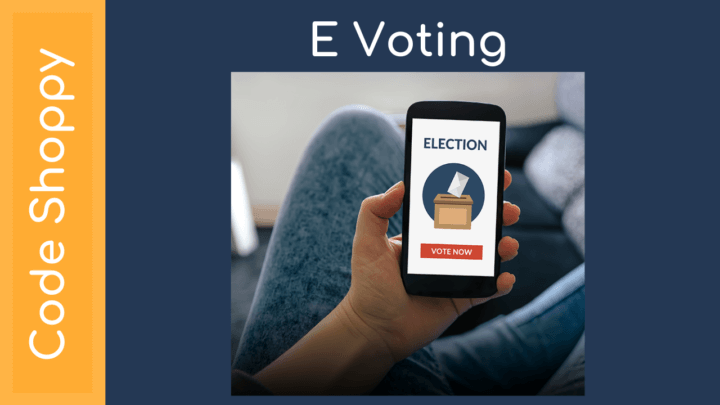Online Voting System Project Application
Group Signature Entanglement in E-voting System
In any s e c u r i t y system, there are many security issues that are related to e i t h e r the sender or the receiver of the message. Quantum computing has proven to be a plausible approach to solving many security issues such as eavesdropping, replay attack and man-in- the- middle attack. In t h e e-voting system, one of these issues has been solved, namely, the integrity of the data (ballot). In this paper, we propose a scheme that solves the problem of repudiation that could occur when the voter denies the value of the ballot either for cheating purposes or for a real change in the value by a third party. By using an entanglement concept between two parties randomly, the person who is going to verify the ballots will create the entangled state and keep it in a database to use it in t h e future for the purpose of the non-repudiation of any of these two voters.

In modern societies, automatization has been employed in different aspects of social life, such as voting and e-commerce. Consequently, this led to the development of a number of protocols for electronic voting to work successfully. Those protocols are designed to solve security issues, s u c h a s confidentiality, data integrity and authentication [1]. Most v o t i n g protocols implement public-key cryptography to guarantee the inability of the adversary to solve the difficult computations, such as factoring large numbers, but the advent of quantum computing has made factoring easier [2]. The authentication of receivers and senders is very important in any system, a n d some even consider authentication to be the most important aspect of security services. The authentication process is used to validate the identity of the sender, the identity of the receiver, or the content of the message [3]. Authenticating the identity of the receiver to the sender is called non-repudiation. It is also a very important process because it guarantees both the sender’sand receiver’srights. Many security solutions, such as digital signature, can be used to achieve authentication and non-repudiation. In order to achieve non-repudiation, the receiver has to authenticate the identity of the sender using a security solution, such as digital signatures [4]. Quantum computing opens a new door in computer science. It can enhance the computational complexity of many hard computer science problems. However, some classical computing issues still have not been improved practically using quantum computing. Quantum computing depends on physics through the power of atoms [2]. It introduces qubits and superposition. Qubits represent two states at the same time, and a quantum computer can be in a superposition of two basic states at the same time [5]. Blind signature was introduced by David Chaum [6]. It is the process of blinding messages before signing them, where the message owner and the signer are different. It is used in privacy-related protocols. For example, it can be used in E- voting systems, where the ballot is confidential [7]. Al s o , group signature was introduced by David Chaum. It is basically done when a group member signs a message on behalf of the group to maintain anonymity among that group. It aims to hide the signer’s information [8]. In quantum computing, there is a method that allowstwo particles to act as one object, even though they are two different physical objects. This concept is called entanglement [9]. Thus, when you know the state of one particle, you will know the state of the other particle. Further, changes in one particle state will affect the other entangled particle. The entanglement concept provides the availability of checking back the anonymity in the e-voting process by creating an entangled state between two voters [10]. In other words, the voter can follow and know whether his/her ballot has been changed by checking the entangled state through calculating a new one a n d comparing it with one that they already have. In this paper, we propose a mechanism that gives a third party, such as a group manager, the ability to verify and determine the value of the qubits between two voters. This process is executed using a two-particle entangled quantum system. The first part of the paper defines the problem of the e-voting security system. The second part describes some related work that discusses different points that are related to the proposed problem in this work. The third part proposes a solution that could be applied to solve the non-repudiation problem. Then we discuss some security-related points regarding the integrity of the ballot and non-repudiation process itself. Code Shoppy




